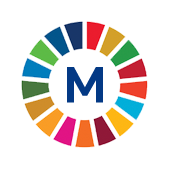 4.1.2 Completion rate (primary education), by wealth index quintilesMetadataPeriod: Every four yearsYear: 2025 |
 4.1.2 Completion rate (primary education), by wealth index quintilesMetadataPeriod: Every four yearsYear: 2025 |
| METADATA |
| Indicator information |
| Definition and methodology |
| Data source type and data collection method |
| Notes |
| ID of global indicator |
| Metadata update |
| Global metadata |
| Indicator information | Top |
| Indicator | |
4.1.2 Completion rate (primary education), by wealth index quintiles | |
| Global indicator name | |
4.1.2 Completion rate (primary education, lower secondary education, upper secondary education) | |
| Target | |
4.1 By 2030, ensure that all girls and boys complete free, equitable and quality primary and secondary education leading to relevant and effective learning outcomes | |
| Goal | |
Goal 4. Ensure inclusive and equitable quality education and promote lifelong learning opportunities for all | |
| Definition and methodology | Top |
| Definition | |
Primary completion rate is the percentage of children who are 3-5 years above the intended age for the last grade and who have completed the last grade of primary education. | |
| Methodological explanations | |
According to the ISCED 2011 classification, for categories ISCED 1 - primary school, corresponding to grades 1-4 of primary school (typically for ages 6-9 years), ISCED 2 - lower secondary school, corresponding to grades 5-8 of primary school within the national education system (typically for ages 10-13 years) and ISCED 3 - upper secondary school, corresponding to grades 1-4 of secondary school within the national education system (typically for ages 14-18 years).
MICS 6: https://www.stat.gov.rs/media/5611/mics6_izvestaj_srbija.pdf | |
| Method of calculation | |
The number of children who are 3-5 years above the expected age for the final grade of the first cycle of primary education (4th grade of primary school according to the national education system) and who: (1) the highest level of education the child is currently attending, or has attended in the past, is higher than primary school (according to the national education system), or (2) the highest level of education the child is currently attending, or has attended in the past, is primary school (according to the national education system), the highest grade is the fourth, and the child has completed that grade, or (3) the highest level of education the child is currently attending, or has attended in the past, is primary school (according to the national education system), and the grade the child is attending (or has attended) is from the 5th to the 8th grade of primary school (according to the national education system), is divided by the total number of children who are 3-5 years above the expected age for the final grade of the first cycle of primary education (4th grade of primary school according to the national education system) and multiplied by 100. The unit of observation is children who are 3-5 years above the expected age for the final grade of the first cycle of primary education (4th grade of primary school according to the national education system). | |
| Unit of measure | |
% | |
| Available disaggregation | |
Wealth index quintiles | |
| Territorial level | |
Republic of Serbia | |
| Data source type and data collection method | Top |
| Data source | |
Multiple Indicator Cluster Survey (MICS) | |
| Periodicity of data collection | |
Every four years | |
| Notes | Top |
The last available data are from 2019, when the last MICS survey was conducted in the Republic of Serbia. | |
| ID of global indicator | Top |
C040102 | |
| Metadata update | Top |
| 29/5/2025 | |
| Global metadata | Top |
https://unstats.un.org/sdgs/metadata/files/Metadata-04-01-02.pdf | |